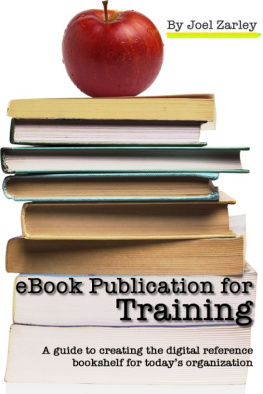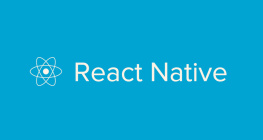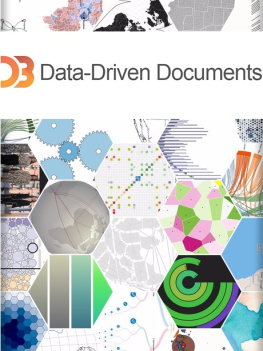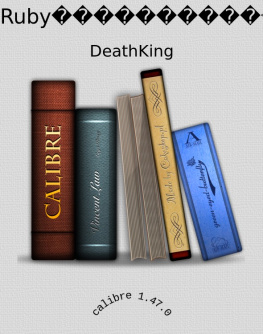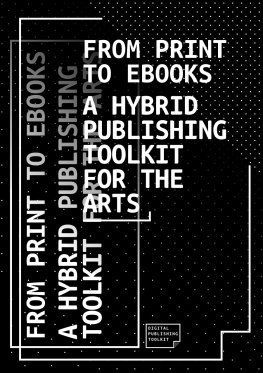eBook Publication for Training
Joel S. Zarley
Smashwords Edition
Copyright 2011 Purple Palm Media. All rightsreserved. No part of this book may be reproduced or transmitted inany form by any means without the prior written permission of thepublisher. For information on getting permission for reprints andexcerpts, contact editor@purplepalmmedia.com.
Notice of Liability: The information inthis book is distributed on an As Is basis, without warranty.While every precaution has been taken in the preparation of thebook, neither the author nor Purple Palm Media shall have anyliability to any person or entity with respect to any loss ordamage caused or alleged to be caused directly or indirectly by theinstructions contained in this book, or by the computer softwareand hardware products described in it.
Trademarks: Many of the designations usedby manufacturers, sellers, and publishers to distinguish theirproducts are claimed as trademarks or trade names, and are theproperty of their respective owners. All product names and servicesidentified throughout this book are used in editorial fashion onlyand for the benefit of the trademark owner with no intention ofinfringement of the trademark. No such use, or the use of any tradename, is intended to convey endorsement or other affiliation withthis book or its author and publisher.
Contents
Introduction
Why this Book?
Why should a learning professional know abouteBook technology? As an instructional designer, you have a lot morein common with authors and publishers than you may realize.
The More Things Change
I became a trainer (and later, an instructionaldesigner) in a corporate environment in 1989. It was with a smallstart-up telecommunications company that was a subsidiary of alarger hotel chain. (This was back in the early days of longdistance deregulation when nearly everyone was launching their owntelephone company.)
My initial responsibility in this role was totrain new long distance operators in a two week classroom program.Like most new trainers, I grew into the role organically. I startedas a call center operator; was promoted to shift supervisor; thenfinally became the call centers trainer. Like a lot of people inthis situation, I more fell into training than it being any sortof career plan. However, either by luck or by fate, I had found myprofessional calling.
In the early days of my training career, thetechnology available for developing learning materials was somewhatlimited. I can recall doing screen prints of our call centersoftware; photocopying them onto transparency sheets; then coloringthem in with markers to emulate the color user screens. Then, Iwould use the resulting transparency mock-up of our screens on anoverhead projector to teach new operators how to use the software.(Not only was this long before the days of screen cam software,it was also before most people had color printers available tothem.)
As the years went on, the companies I worked forchanged, and the technology available to trainers progressed at arapid pace. I started developing eLearning (then known as CBTcourses) in the late 1990s, eventually moving into web-basedtraining, rapid development tools, and eventually onlineperformance support systems.
So, that brings us to the next quickly evolvinglearning technologyeBooks.
The Past and Future of eBooks
The concept of electronic books has been aroundfor quite some time. Arguably the most widely known digitaldocument format (the Adobe Portable Document Formator, PDF) wasdemonstrated by Adobe Systems at Comdex in 1992. However, overtwenty years earlier, Project Gutenberg had been started by aUniversity of Illinois freshman by the name of Michael Hart.
In July, 1971 Project Gutenberg was born. Namedafter the fifteenth century man who is considered the father ofmodern printing, the project was founded with the simple missionto encourage the creation and distribution of eBooks. Startingwith the United States Declaration of Independence, Hart(and other volunteers) began the slow process of manually typingthe text of public domain documents into a simple ASCII format. InAugust, 1989 (over 18 years after its founding) Project Gutenbergcompleted its tenth book, The King James Bible. Encompassingboth testaments, the digital version of the Bible was around 5MB insize.
However, the advent of the Internet hastened theprojects development. With the release of the first true Webbrowser (Mosaic) in 1993 it became much easier to recruitvolunteers and harvest their efforts. Between 1991 and 1996, thenumber of books in the project doubled every year. In 1997, thethousandth book was added; in 2002 there were 5000; and by October2003 the collection contained 10,000 documents. As of early 2011,Project Gutenberg contains over 33,000 documents. Every document isin the public domain and available for free download. The projectswebsite is www.gutenberg.org.
One of the first major experiments withcommercial eBooks was the release of Stephen Kings Riding theBullet in 2000. With over 400,000 copies downloaded within thefirst twenty four hours of availability, the future of publishingseemed initially evident. However, the technical infrastructure,consumer hardware, and intellectual property protections (nowcalled DRM, or Digital Rights Management) had not yet evolved tothe point where commercial eBooks were seriously viable.
Amazon.com was founded in 1995 as one of thefirst online bookstores. It later expanded into other lines ofmerchandise, and is today the largest online retailer in the UnitedStates. Amazon began selling the Kindle in 2007 which launched thepopularity of the eReader as a consumer electronic device.(Although, Amazon did not invent the first eReader. SonyCorporation began selling the Librie eReader device in 2004.) Itwas the Amazon Kindle that really introduced eReaders to themasses.
In the past few years, many more eReaders havebeen introduced to market. These include product updates fromAmazon and Sony, as well as entries by established booksellers (theBarnes and Noble Nook), and upstarts like the Canadian companyKobo. Even as the eReaders have expanded in popularity andfunctionality, their prices have dropped significantly.
In addition to dedicated eReaders, many otherdevices have expanded into the eReader realm. All smartphone models(iPhone, Android, Blackberry, Windows Phones, etc.) and tabletcomputers (iPad, Galaxy Tab, Motorola Xoom, Blackberry Playbook,etc.) have eReader applications (or apps) designed for them. And,of course, its still possible to read eBooks the old fashionedway on your desktop or laptop computer!
So, where is the future of eBooks/eReadersheading, and why is it important to those of us in the role ofworkplace learning and performance? Consider this information:
eBooks now comprise nearly 10% of all booksales.
eBook sales are expected to grow by 47% eachyear until at least 2015 (Goldman Sachs).
Amazon now sells more eBooks than traditionalprint; 143 eBooks are sold for every 100 printed books.
In a 14-nation survey done by Boston ConsultingGroup (May, 2010), 49% of respondents said they planned to buy aneReader or tablet device within the next three years.
These trends point to continued acceptance andproliferation of eBooks and eReaders, and as such make them aviable alternative for how we create, publish, and distributelearning materials within our organizations.
About this Book
This book is intended for use by learningprofessionals who want to learn how to publish content in eBookformat.
The goal is not only to provide the nuts andbolts instructions for creating an eBook, but also to examine thehistory and future of this medium, and the pros and cons of usingit for learning materials.

